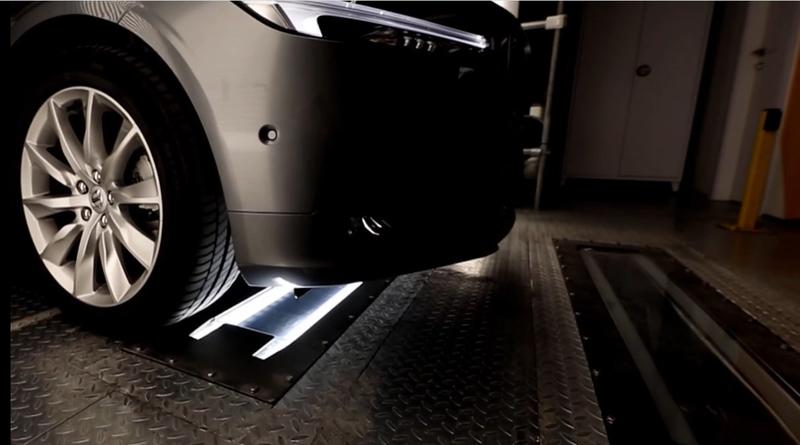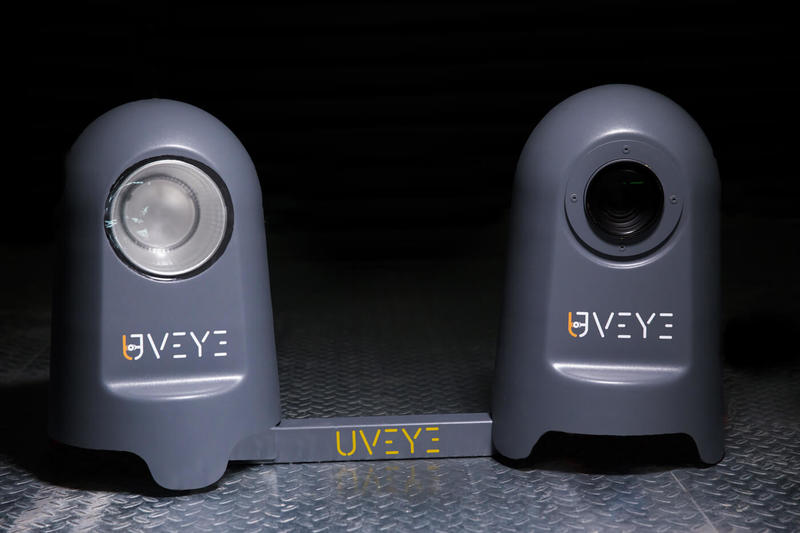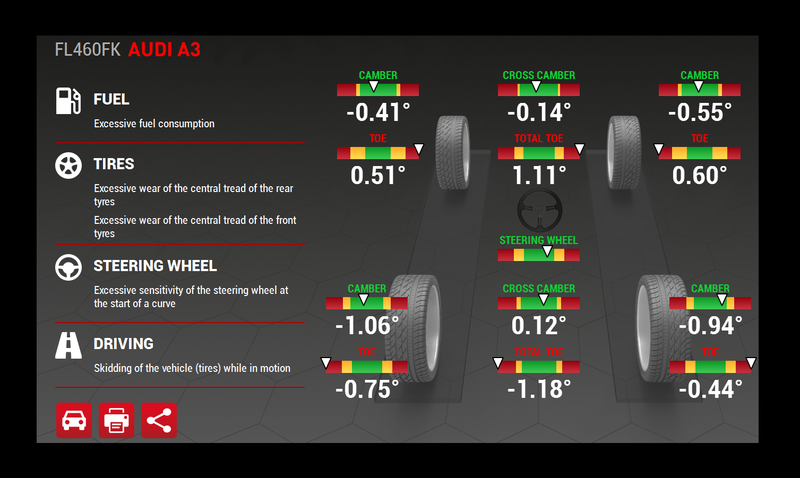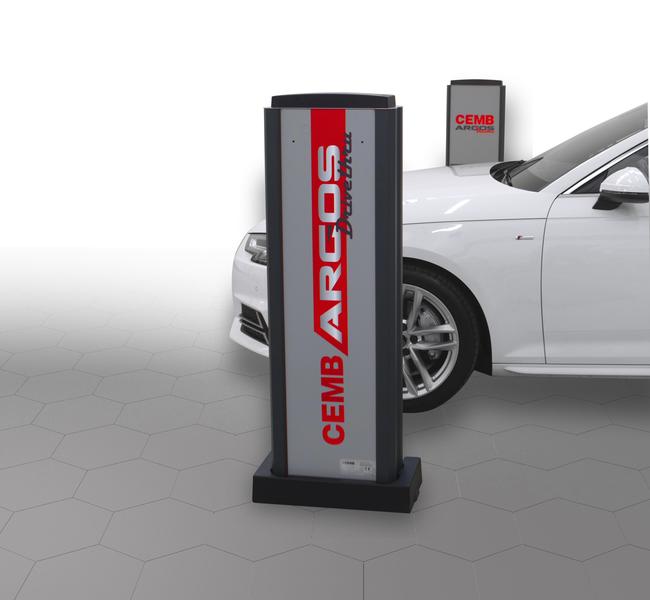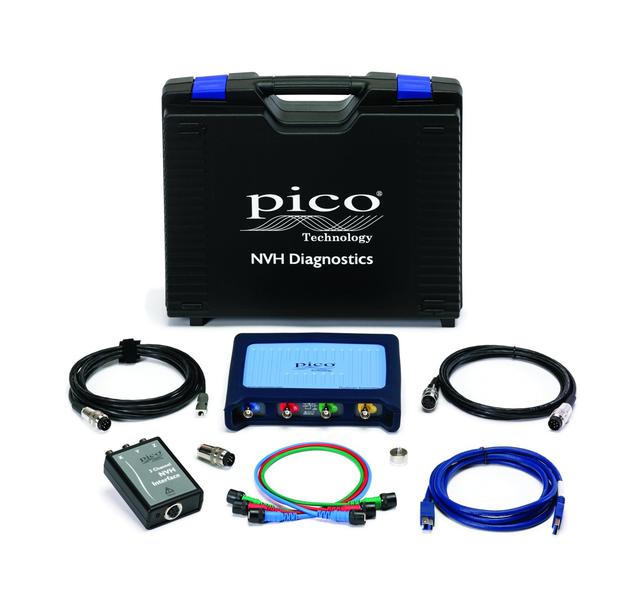Cars are being transformed, and this trend will accelerate even further. Now, let us recall the words pronounced by Luca De Meo during the presentation of the recent Renaulution strategic plan. The CEO (ex Fiat and Seat) said that "Renault is set to become a hi-tech company with interests in the automotive sector" and introduced the Software République, a large development centre designed to have control over the French manufacturer’s vehicles. De Meo then forecasts an even greater expertise on data processing, artificial intelligence, over-the-air updates and Adas/autonomous driving.
Computer-like cars will force a sudden change of pace also on after-sales operators.
Electronic eyes with sharp vision
Hi-tech breakthroughs carry significant implications for garages, as ever more sophisticated tools require some training. However, those who are willing to make such a commitment could rely on procedures with high business potential.
Take, for example, automatic underbody and tire inspection. This is a relatively new technique, but one that is expanding because of its potential. Not unlike driver assistance systems, it is based on image recognition. UVeye's Helios system, for example, features "windows" set into the workshop floor. These house spotlights that illuminate the underbody and special high-definition cameras. Sophisticated algorithms make it possible to take sharp images of the vehicle passing over the device at speeds of up to 30 km/h. The system can be integrated with Artemis, a device that takes images of the wheels. The images obtained are then processed with the help of artificial intelligence and in a few seconds, an analysis of the underbody and tires is shown to the specialist (and eventually to the customer). In this way, inaccurate inflation, damage to sidewalls and treads, damaged rims, leaks, rust, dents and broken or missing components will be found and highlighted.
Car service looks towards new horizons
Helios is also available in a portable version while Artemis is transportable on its own. On the other hand, the Atlas system performs a 360° scan - at speeds of up to 15 km/hour - to detect scratches, dents and general bodywork damage. These tools, which prove useful even in manufacturing facilities, enable innovative and efficient services intended for both workshops and after-sales. Imagine a motorist entering a workshop: all he/she has to do is drive along a "service lane" for a quick check of the car. The customer will have a clear picture of the conditions of the vehicle in real time and with reliable results - the operator does not intervene directly – which convey a sense of trust. The fact that the process can be repeated several times creates a bond with the workshop ("this dent wasn't there last time"), and automation makes the process very reliable with little effort. California-based UVeye offers a complete set of tools for automated inspections, but you don't have to cross the Atlantic to get sophisticated and practical solutions. In fact, an Italian company, Cemb, has recently presented its Argos Drive Thru, a system that scans a vehicle’s set up in a few seconds, detecting all the characteristic data of the wheels with a simple passage using laser sensors. The first axle is placed in front of the system, stays for a few seconds - the exact position is indicated on the monitor - and then repeats the operation for the other axle.
Let me measure the toe-in
The data collected with this simple procedure are many: in addition to camber and toe, steering centring and, for each axle, cross camber and total toe are measured. Each value is displayed by a white cursor moving along a coloured bar: green means the values are correct, yellow indicates a significant deviation and red the need for an urgent intervention. The procedure is very simple and neat - there are no targets or other devices to be attached to the wheels - therefore the client can also perform this task. This strengthens the bond between the workshop and the client making him more confident, for the reasons seen above. A display gives the necessary indications and the data can be sent and shared in real time, either on a cell phone or tablet via email or whatsapp. The device’s connection to the Internet makes it also possible to obtain the correct data of the vehicle starting from its license plate. 2 "packages" are currently available: Plus has a 365-day license to access the database, technical specifications updated in real-time, software updates and automatic recognition of the license plate. Premium adds automatic license plate recognition of any vehicle entering the workshop. The system can be controlled in remote via the Argos App.
Accurate check-up
We need to point out that in addition, Cemb boasts a wide range of industrial equipment used to balance rotating components of all kinds. Sophisticated analysis is possible also in the automotive field thanks to components and software made by Pico Diagnostics. The NVH kit, for example, detects the origin of Noise, Vibration and Harshness on the road. These kits feature 3-axis accelerometers that collect vibrations while microphones take care of the noise. The collected data is processed with FFT (Fast Fourier Transform), a software procedure that breaks down a complex noise or vibration into its components. The result is called a "spectrum" and lists the various frequencies and their levels. Think of a classic tuning fork used on musical instruments: its spectrum is a list of just one frequency, the one at which it vibrates. An A note is produced by a vibration at 440 Hz, that is, 440 oscillations per second. A violin tuned with a tuning fork will have a more complex spectrum: in addition to 440 Hz it will also deliver vibrations at double frequency, 880 Hz, triple, 1.320Hz, and more.
Every flaws has a sound
These multiple vibrations are called harmonics, and their intensity gives the characteristic sound of a particular violin. Pico's system has to be "instructed", or told what to look for: how many cylinders the engine has, tire size, final drive ratio, and so on. An OBD interface informs the system of engine speed and rpm, and at this point, the analysis can tell us many things. The system knows the rolling circumference of a tire, so it will know how many revolutions the wheel and its associated components make in a second. A 255/55-17 tire makes about 13.88 revolutions per second at a speed of 100 km/h and therefore a frequency peak at 13.88 Hz (with secondary peaks at 27.76 and 41.64 Hz) warns us that the abnormal vibration is connected to a tire, a rim or other components - brake disc, axle shaft, joint - that turn at the same speed. Multiple frequency linked to the transmission ratio tells us something about the transmission shaft and so on. The system does these calculations and assigns these vibrations to the right component. Knowing how to read this data can be useful even to simply exclude some possible causes of an abnormal vibration and this is already a positive result.
These are sophisticated procedures that require experience and good preparation but the results can be interesting as it could speed up the search of those strange noises or even solve a problem that would prove difficult relying on traditional methods.

